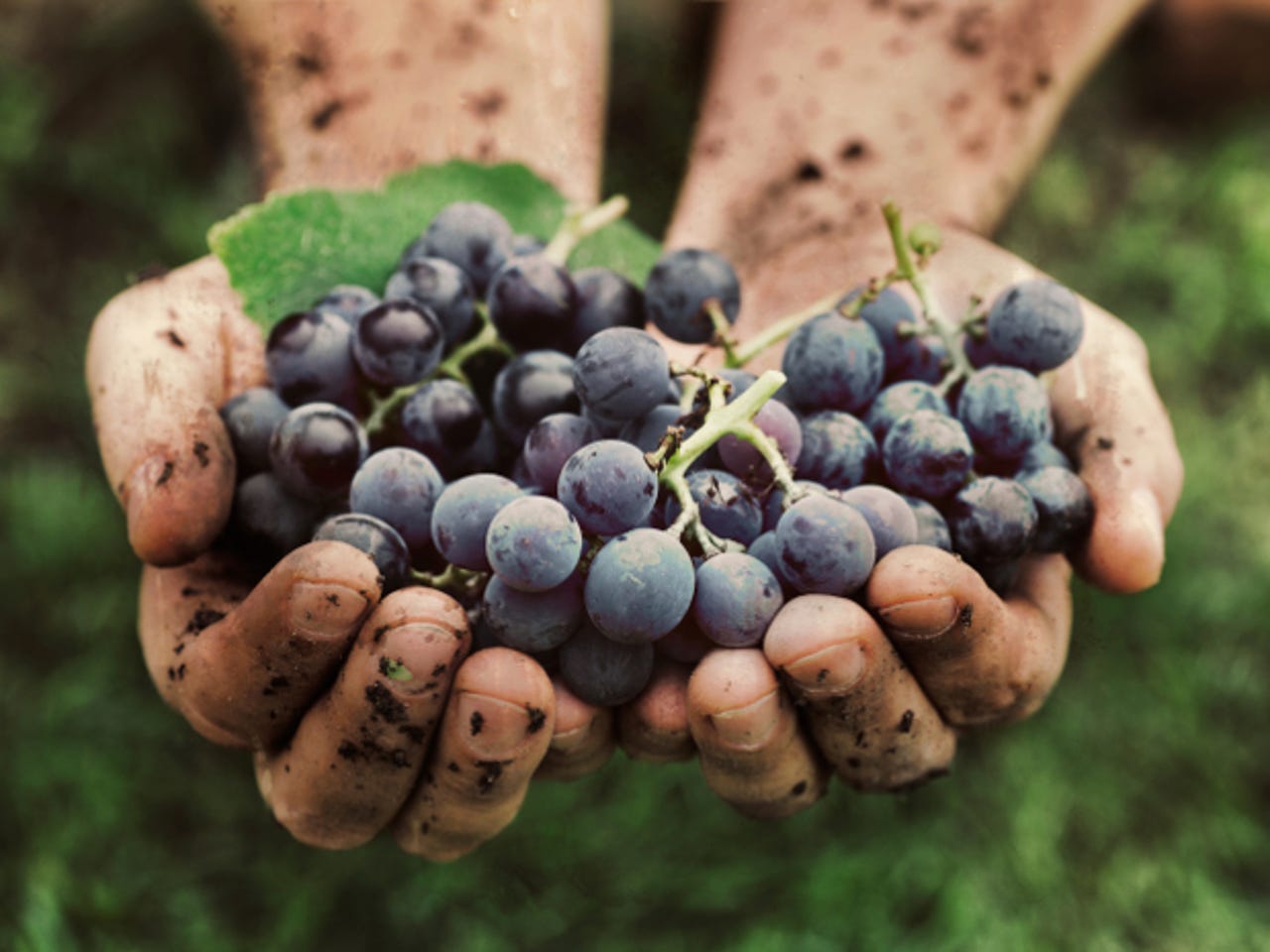Internet of Wine: The Italian project using networked vineyards to make a better vintage


Accordingly, for the last couple of years, the 46-year-old professor of engineering has been installing dozens of tiny cameras connected through a low-cost wireless network in some of the finest vineyards of the country - those where Barolo or Brunello di Montalcino wines are produced. Every hour, the devices take a picture of the grape and make it available online, where it can be seen in real-time or stored for an agronomist to inspect later.
Trinchero and the wine makers that allowed him access to their fields are persuaded that such a system could help make the Italian wine sector more efficient without affecting quality. "Organic grape-growing is expensive," he told ZDNet. "The plants have to be constantly monitored in order to minimize the use of chemicals against pests - a process that means an agronomist always has to be on site. Not every producer can afford it."
With iXem Labs' hardware and networks, experts' intervention can be scheduled or called upon only when needed. "We wanted to create tools that could help the development of a more sustainable agriculture," Trinchero said. "There is no other solution like that on the market right now."
According to iXem Labs, the system might help the farmers to save up to €650 per hectare per year, thanks to lower chemical use and less need for agronomists.
No small feat
Thanks to the ubiquity of smartphones and social networks, the idea of a device taking images and transmitting them over the internet may sound quite ordinary. The problem is that the conditions found in a vineyard are anything but. Besides rain and wind, heat can be hard on technological devices as in some fields of Italy -- in Sicily, for example, the temperature can easily reach 50°C. What's more, in the countryside, energy consumption must be kept at minimum as there may be no permanent or reliable power supply, while broadband connectivity tends to be less readily available than in urban areas.
Read this
As the European Union's statistics show, rural Italy is not the easiest place to get fast internet connections while its often hilly landscape make it difficult to use wireless broadband products.
To overcome these problems iXem Labs drew on the knowledge accumulated over the years spent in bringing the internet to remote areas of the world such as the Amazon in South America or the Comoro Islands in Africa. First, the team developed small ad hoc cameras (9cm long, 5cm large, 5cm deep) that could withstand the rigors of the weather. Then, they made the devices into the nodes of a low-energy wireless sensor network which can cover vast areas and still transmit high-resolution images to a base station.
Thanks to iXem Lab's own technology, the network is built with the farmers' needs in mind. "At one end of the spectrum, you could have up to 100 cameras per hectare, this is how granular our system can be. But I doubt anyone in real life situation would ever want anything like that," Trinchero said.
On the other hand, he added, you can manage to efficiently cover a wide area with just a few nodes, even if your internet connectivity doesn't stretch too far. Thanks to the fact that the nodes can use each other as bridges, Trinchero claims the network can go as far as 20km from the base station. "You can have just one node every 25 hectares if you want to, and the system will work fine. But what is important is that you can configure it according to your needs," he said.
The image recording is one of the most distinctive features of the iXem Labs' system, but not its only functionality. The way the network is designed allows for any camera-node to become the epicenter of second-level networks composed of up to 60 sensors each. Each sensor -- able to collect data on factors such as the soil or leaves' humidity level or the temperature of the site -- is powered independently, and once every 60 minutes it wirelessly delivers the data to the camera-node which passes it on to the base station along with the images it has taken.
The result is an extremely flexible structure. "You can add sensors at will and configure them to collect the data whenever you want. The only rule is that the transmission from the sensors to the camera and from the camera to the base station should happen only once every 60 minutes," Trinchero said.
This sort of organized anarchy is the key to minimizing power consumption, to make sure each component only uses the minimum power it needs to function. The sensors, iXem Labs says, can run for up to 10 years on a normal AA battery while collecting data every five minutes. Each camera-node can work practically forever if powered by a solar panel the size of an iPhone 4, or it can go on for about a month with an AA battery.
Back to its roots
The partnership between networking and wine experts didn't happen just by chance. Trinchero is a native of Monferrato, an area of the Piedmont region in north-western Italy considered one of the most important wine districts in the country. In 2012 he attended a conference where one of the speakers was Angelo Gaja, owner of the famous winery of the same name and producer of some of the best Barbaresco and Barolo wines from the Boot.
The engineer told the winemaker about his dream to one day use the technologies his lab was working on in vineyards the technologies. The two Piedmont natives clicked and one year later the first experiments with the connected cameras started on Gaja's fields. In the meantime Trinchero had signed up other producers of high-end wines, such as Brunello di Montalcino and Nobile di Montepulciano in Tuscany. "I grew up among grapes fields and to me working there is a way to live close to my roots," he said.
The devices and the wireless sensor network have been refined over the past two years thanks to the experiments iXem Labs and the wine producers have been running. The system is now ready for the next step: commercialization. Last March, the university's project was spun out, becoming a startup named iXem, founded with the mission of bringing the system to market.
The first two camera-nodes have already been sold to wine makers in Montalcino and Montepulciano, two areas in Tuscany were the wines of the same names are produced. The idea is to start with the cameras, which address a gap in the market, and then win customers round to the idea of a flexible, easily-configurable network."Images give you an idea of the health of the crop right away, it is just like a real-time alert and nobody offers that now," Riccardo Stefanelli, one of the three co-founders of iXem, told ZDNet. The company's aim is to begin with wine and then expand into other areas of agriculture. In the future the startup will add other technologies being developed at the university labs to its portfolio, such as innovative sensors that are able to detect the humidity of the soil up to a depth of 15 meters.
In the meantime, the market might find other uses for the products the engineers haven't even thought of. "Some producers have already asked about the possibility of publishing the pictures online. They said it might be good for marketing," Stefanelli said.
Read more